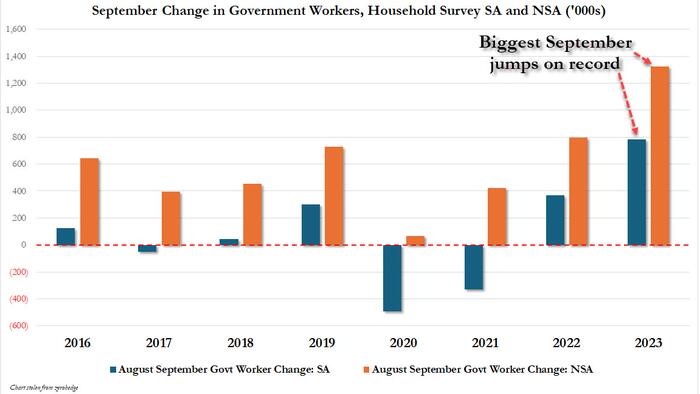The latest jobs report revealed a seemingly robust labor market comeback, characterized by a notable increase in job numbers from both the household and establishment surveys. This surge, coupled with a decline in the unemployment rate and noteworthy upward revisions to previous months’ employment figures, indicated that the recent labor market issues might have been transient. However, within the favorable statistics lies a significant concern: a notable uptick in wage growth, suggesting that inflationary pressures are resurfacing. This development, alongside the rising oil prices, hints at underlying economic tensions that may need attention sooner rather than later. Nevertheless, it remains important to dissect the details of the report, particularly those elements the Bureau of Labor Statistics (BLS) typically frames to mask broader weaknesses in the job market.
When examining the finer details of the report, it was remarkable to observe minimal evidence of usual trends that can indicate underlying labor market fragility, such as a rise in part-time employment juxtaposed with a drop in full-time jobs, or a disproportionate increase in foreign-born workers compared to native workers. Surprisingly, this month’s data showed a decrease in part-time positions alongside a rise in full-time jobs, with native-born worker numbers rebounding from a recent low, while the number of foreign-born workers dropped from an all-time high. This shift offered a glimmer of optimism regarding labor conditions, suggesting improvements were driving full-time employment growth rather than masking weaknesses.
Despite these positive movements, closer scrutiny revealed that the jobs report was manipulated to present stronger overall employment figures as part of strategic narrative-building, particularly in light of the upcoming election. The sharp increase in the number of government workers was pivotal in illustrating this trend. The report indicated that government employment surged by a staggering 785,000 from August to September, marking the largest monthly rise recorded, while the private sector added a mere 133,000 jobs. Such discrepancies raised questions about the accuracy of these numbers and hinted at potential political motivations behind them as the government aimed to project a stronger economy prior to the elections.
Another layer of complexity presented itself by analyzing how the statistics were adjusted and reported. Traditionally, substantial unadjusted traffic into government positions occurs each September due to the return of teachers, but this year, the seasonal adjustments did not follow typical patterns, amplifying the apparent growth in government employment. This deviation raised eyebrows, particularly as unadjusted data reflected a historic increase in government roles, alongside a significant drop in private employment. The sheer volume of government job additions––nearly 1.3 million unadjusted––suggested either exceptional circumstances or indicative of data manipulation to bolster favorable appearances of employment figures.
The implications of these data alterations extend beyond mere statistical abnormalities; they point toward a troubling trajectory regarding the reliability of employment data as a whole. Recent downward revisions of employment statistics indicate a volatile and possibly politically influenced labor market. This situation has led to scrutiny from notable figures, including Federal Reserve Chair Jerome Powell, who has voiced doubts regarding the credibility of BLS data. Heightened questioning over the data’s integrity raises red flags, particularly in relation to the potential electoral narrative, which could derail accurate assessment of the economic landscape.
Ultimately, while the BLS may have painted an optimistic picture leading to the elections, the stark reality persists that a significant portion of the workforce relies on multiple jobs to achieve financial stability. Despite the brave face presented in the reports, the growing number of people needing to juggle more than one job illustrates the ongoing economic struggles facing many Americans. This juxtaposition of official data and personal economic experience suggests that while the statistical narrative may be curated for political expediency, the individual stories behind the numbers reflect ongoing challenges to the sustainability and robustness of the labor market.

